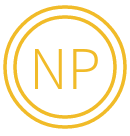Biomimicry: Innovation inspired by nature

Verified Non-Profit
$1,007
$1,000 goal

The Description
I am seeking funding for labs and workshops to engage students in this project (described in detail below). Funding is also needed to develop working prototypes for final pitches to external experts., for example 3D printing.
|
1. Project Summary - What students are going to do and why they are doing it |
Students will use inspiration from nature to design a solution to a human problem. Students will prepare a feasibility report for the design, create detailed sketches and prototypes outlining their solution. Students will pitch their ideas to a local industry expert panel including representatives from the San Diego Zoo Bioinspiration Center, an entrepreneur/angel investor and a commercialization and intellectual property expert.
Biomimicry is emerging as a valuable tool for solving the world’s greatest challenges. Each year the Biomimicry institute hosts a Global Design Challenge - this year’s challenge focuses on solutions from nature to the issue of feeding 9 billion people by 2050. The Challenge is not open to high school students, but could form a structure for this project to prepare them for future challenges.
2. Essential Question
An essential question should inspire students, require them to conduct serious research, and relate to a real world issue
How can nature inspire economically feasible engineering solutions to the world’s greatest challenges?
3. Products - What students will do/write/create/build
Students will:
- Become familiar with human innovations inspired by nature through a series of observation workshops, labs and weekly challenges.
-
Identify a problem that can be solved by nature OR identify a solution in nature and find a way to apply it to human problems.
-
Prepare a feasibility report that outlines the biological phenomenon that inspired their solution. The plan will include detailed sketches of the solution design and identify some hurdles or barriers that need to be overcome for it to be produced.
-
Produce a working prototype of their design
-
Create 5 minute pitches and present them to a panel of experts
4. Exhibition venue & Audience
Students will exhibit their designs during a “public” pitch to external experts. The pitch is likely to take place at HTH, but will include an invited external panel and an audience of students and parents.
5. Outside Experts - Who we are hoping to work with, and what they could do
|
Who they are |
What they could do |
|
San Diego Zoo Bioinspiration Center |
Critique designs and feasibility plan. Lead a tour of the Zoo’s Bioinspiration Center and/or workshops on biomimicry. |
|
Entrepreneur |
Provide feedback on feasibility of design and suitability for investment |
Intellectual Property expert |
Critique the suitability of the design to the problem and the potential novelty. |
6. What students need to know in order to do a good job, how they can learn it, and when they need to know it
|
What |
How |
When |
|
Examples of biomimicry |
Weekly challenges to find a problem that can be addressed by a solution in nature or find a solution in nature and determine what problem sit could solve. |
Weeks 1-4 |
|
Understand the science of nature |
Journal club Tuesdays - review in-depth articles about scientific phenomena that inspire engineering designs |
Weeks 1-4 |
|
Feasibility report development |
Using examples in class, students will take on different roles to develop feasibility plans, with frequent revision based on peer and expert critique |
Weeks 5-7 |
|
Design sketches and prototypes |
Using examples in class, students will take on different roles to develop designs, with frequent revision based on peer and expert critique |
Weeks 5-7 |
|
Crash course in pitching |
In class activities requiring students to receive information, identify key points and pitch to a new audience. |
Weeks 7-9 |
7. Skills - skills students will learn through this project
|
Skill |
How Assessed |
|
Observation |
Brief, in-class and outdoor activities to see how observant students are being. Include visit to the zoo - look at animals and plants to see nature’s solutions. Also observe through lab work such as dissections and labs used by scientists and inspired by nature, eg PCR (Taq polymerase). |
|
Collaboration and critique |
Students will work in small teams and will evaluate each other’s performance, contribution, effort throughout the project. |
Public speaking / pitching |
Students will pitch to a panel of experts. Quality of the pitch will be assessed by experts, using a pre-determined rubric. |
|
Applying knowledge to new situations |
Feasibility plan will show how suitable the design is to the problem and how feasible it is. Ultimately this will be assessed by the expert panel, and the teacher reading the feasibility plan. |
|
Problem solving / critical thinking |
Students are finding new solutions to problems. |
|
Use scientific evidence to support an argument |
Defense of design suitability during pitch |
|
Design experiments to test hypothesis |
Students will identify ways to test the feasibility of their design - surveys/interviews, physical tests using prototypes etc |
8. Curriculum content - Information should students learn and apply through this project
|
Content |
How Assessed |
|
Content for each group may be slightly different, depending on the scientific phenomenon that inspires them |
Feasibility report will include detailed evaluation of scientific information about the natural phenomenon that inspired them - what makes it unique and suitable to the problem. Student understanding of their concept should also be evident in their pitch to the panel - scientific understanding will form part of the assessment rubric. |
|
Physics / engineering concepts |
Students will be introduced to mechanical engineering concepts and design process when creating their sketches and feasibility plans. |
|
|
Students will learn how successful nature is at minimizing waste and how humans can adapt this technology to solve global problems. |
|
|
9. Timeline/Milestones - key dates and important milestones for this project.
(eg check-ins, critique sessions, deadlines for drafts and specific product components)
|
Week |
Activities |
Deliverables |
|
1 |
Observation activities
|
Class discussions |
|
2 |
Group Challenge #1: Comparing nature’s solutions. Students dissect a fish, a squid and a crab, looking specifically at floatation mechanisms. At the end of the week, students present a comparison and propose ways to improve on nature. |
Short presentation to class |
|
3 |
Group Challenge #2: present class with an example of biomimicry and have them identify the life forms/processes it is mimicked after. Spend one day at SD Safari Park observing nature’s solutions. Eg, energy preservation or production. |
Short presentation to class |
|
4 |
Group challenge #3: present class with a “solution” in nature, for example the hippo secretes a gelatinous liquid that protects it from the sun. Or, pistol shrimp clap their claws so fast, it creates a cavitation bubble underwater, producing >200 db of sound (160db bursts a human eardrum) and >4000 degrees C heat (near the temp of the surface of the sun). Give them one week to find a solution in nature and present to class at the end. Students will also perform PCR experiments based on the discovery that Taq polymerase is an enzyme found in thermophilic bacteria that is heat stable and facilitated one of the most influential discoveries in biology. |
Short presentation to class |
|
5 |
Get in working groups and start research to ideas for final product. Each person in the group must come up with an idea and pitch at the end of the week to rest of the class and seniors. Vote on which one is most feasibile to move forward with. |
Pitch to class and senior engineering class |
|
6 |
Work on sketches and feasibility report for critique |
First draft feasibility report due with sketches |
|
7 |
Work on feasibility report and sketches for critique by external experts Work on prototypes - students have access to a 3D printer at HTH, but could also use other materials. |
Second draft feasibility report, including sketches, due |
|
8 |
Crash course in pitching Finalize prototypes Rehearsals |
Final feasibility report due |
|
9 |
Pitch week |
Pitch and prototypes |
10. Personalization
Students can take this project into many different directions. Biomimicry is present in a range of industries, from medicine and technology, to construction, architecture, even art and literature.
Back Up Plan
If I do not meet my goal I will work with the school to negotiate additional funds.
About the Creator

Investments (17)
Anonymous
10 years ago
Anonymous
10 years ago
Anonymous
10 years ago
Jill Hayashida
10 years ago
Michael Antonorsi
10 years ago
Deirdre Rose
10 years ago
Anonymous
10 years ago
Mary B Callaway
10 years ago
Harold Rose
10 years ago
Victoria Varon
10 years ago
Lian Lin
10 years ago
Jami Hosfelt McGrath
10 years ago
Mary A Dwyer
10 years ago
Chris Proctor
10 years ago
Christine Habib
10 years ago
Lauren levieux
10 years ago
Jeff Lucia
10 years ago





Comments (1)
Harold Rose January 26, 2015
Leave a Comment